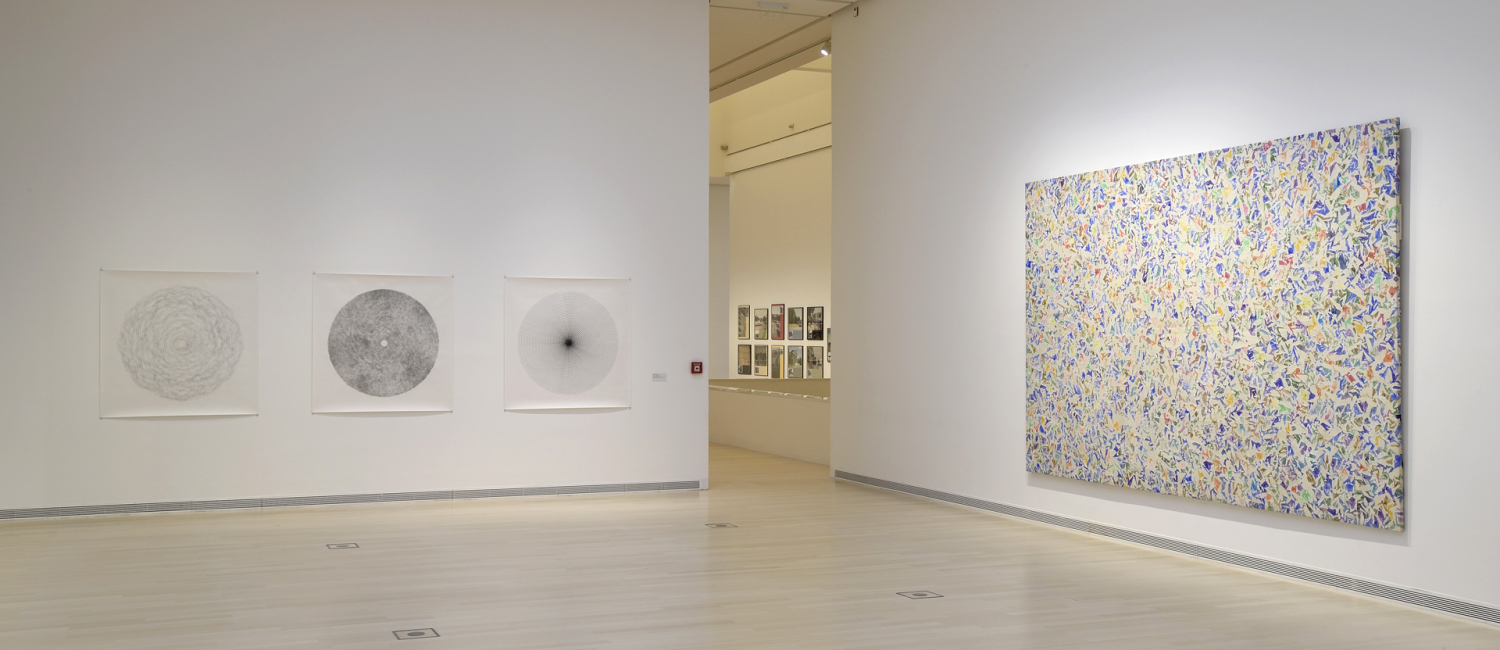Exhibition is open: September 1st, 2020 – December 31, 2023
Time machine is a device that only exists in theory so far, with the help of which we can fly our physical body into the past or the future. Virtual time travel, on the other hand, has a long history: for centuries, artists have depicted past and future ages according to their own knowledge, ideas, and desires, by the means of literature, art, or film, while of course recording their own ages. The new exhibition at the Ludwig Museum is not about the science-fiction possibility of time travel, but examines the relationship between time and art from different perspectives, and sees the works themselves as time machines that allow us to travel mentally.
The original idea of the exhibition Time Machine was to examine the museum’s collection from the present, focusing on the works of the 2000s. However, the present has changed radically in recent months, and this has left its mark on the concept of the exhibition, too. COVID-19 virus has fundamentally shaken the current world order and radically re-evaluated many things. Suddenly, social, political, economic problems, and art itself, appeared in a new light. Existential issues came to the fore: in the shadow of death, human life and health became more valuable, for a short time pushing the aspects of prosperity, development and politics into the background. Science, research, and healing have become more valuable, and personal relationships have become important. Our relationship to time has also changed: while everyday life has slowed down, the time available for action and problem solving has become frighteningly short, and the future has become unpredictable, uncertain. However, after the initial shock and slowdown, the world has now entered an even faster mode of operation paradoxically further shortening the time of humanity and the planet, as if it were still possible to live merely for the present, disregarding historical lessons and responsibility for the future.
The exhibition Time Machine was created during the short break caused by the pandemic, under extraordinary circumstances, so the organizers could not ignore the lessons of the recent period. From the museum’s collection of about 800 pieces, we have selected works that reveal different aspects of personal, artistic and historical time from the curator’s personal point of view.
The exhibition is introduced by works related to time, the passage of time and notable dates (Csaba Nemes, Péter Gémes, Milak-Uranjek), and then giving insight into individual destinies and family stories, the private history of Central and Eastern Europe, through family photos and diaries (Omara, Masha Starec, KwieKulik). Through the works as documents, we can learn about recent history, everyday life and turning points, including the change of regime in Eastern Europe and its connections to the historical avant-garde (Imre Bak, György Jovánovics, Tamás Király, László Rajk,Gábor Bachman etc.). We can think about the fate of monuments (Antoni Muntadas, István Csákány, Ciprian Muresan) and the connections between art, society and politics. We talk about social utopias and their failures, revolutions and wars, and literary utopias and inspirations, slogans and concepts (Peter Weibel, Gyula Várnai, David Csicskan, Miklós Erdély).
The not-too-distant dystopian future and futuristic present will also feature an installation on medicine and the human body and psyche (Gusztáv Hámos – Katja Pratschke), as well as a film on contemporary warfare, war traumas and virtual reality (Harun Farocki). The moment of death was given special attention as the endpoint of human destiny, life path (Robert Longo, Gábor Kerekes, Arnulf Rainer,Wolf Vostell). The works also draw attention to the fragility and unrepeatability of human existence, to the absurdity of wars and everyday life (Josip Vanista).
We present the real and imagined technical devices, which aim to capture the moment, the reality as perfectly as possible (Tamás Waliczky, Nancy Graves). We also examine the relationship between still image and moving image (Dóra Maurer, Péter Türk) and (press)
photography and painting, while highlighting the critical aspects of Photorealism (Malcolm Morley, Richard Estes, László Lakner etc.).
In connection with Picasso, we recall how the greatest innovators of the twentieth century reflect on their great predecessors, the history of painting, by weaving an invisible web between ages, works, and artists (Pablo Picasso, David Hockney, Jasper Johns), but we also look at how the “outsider” sees Western art (Robert Combas, Nedko Szolakov, Sean Snyder).
Finally, we also examine the time “enclosed in a work”, listing the works that are composed of innumerable parts, variations, works into a monumental work in a time longer than usual, hence there is rarely an opportunity to present them (Simon Hantai, Hajnalka Tarr, Gizella Rákóczy, Tibor Gáyor etc.).
Among the works on display are a number of new pieces that have been added to the collection over the past few years.
Curator: Krisztina Szipőcs
CLICK HERE to download the press photos.




















